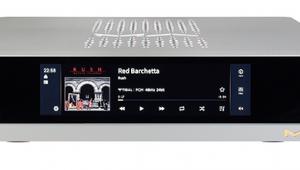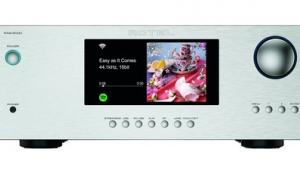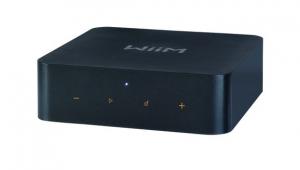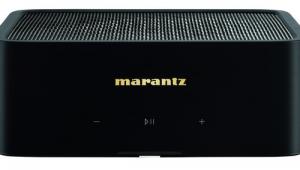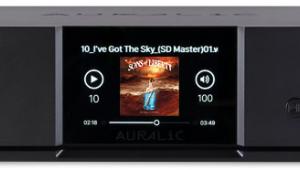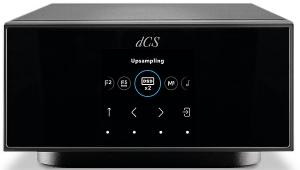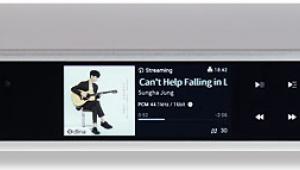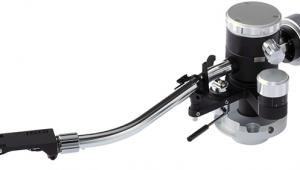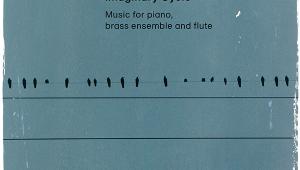NAD Masters M66 Page 2
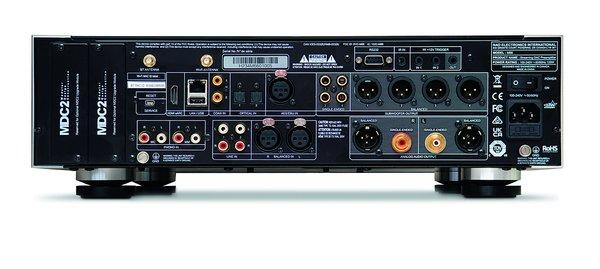
Made To Measure
While the M66 does offer bridging and I've experienced a few set-ups with two or four M23s, for my own listening room a single pre/power combination sufficed, connected to my Focal Sopra No2 floorstanders . After regular two-channel sessions, I elected to add two very different subwoofers, positioned either side of the loudspeakers.
Combining a dual-driver force-cancelling ELAC Sub 2050 with a Q Acoustics B12, with single 12in woofer, goes against best practices. But non-identical subs should be okay, I was informed by NAD, as Dirac Live Bass Control will correct each unit individually. I made a Dirac measurement with a UMIK-1 mic, opting for a focused listening area and 11 measuring points. Taking your time is good advice at this point, as performing Dirac measurements properly is key to getting a good result.
Leaving Dirac and subwoofers to one side for Mercury Rev's beautiful Deserter's Songs [V2 VVR1002772], played from a Pro-Ject CD Box RS2 T , showed the M66 offering airy, delicate detail during the piano intro to 'Goddess On A Hiway', but then tackling the track's more dynamic elements with authority. It was a very refined performance, with plenty of clarity to the melodic bassline and Jonathan Donahue's wistful vocals.
However, engaging the full Dirac filter saw the track's presentation 'tighten up'. Capturing my attention in particular was the harpsichord-like synth which plays more in the background. Listening through the M66 without Dirac engaged it was not emphasised too much, retaining its intended position in the whole - but with Dirac it sounded a lot more natural and discreet.
Sonic Makeover
Showing that tastes and techniques have changed a lot since the end of the 1980s, 'Headhunter V3.0' by Front 242 [Front By Front; Red Rhino Europe, 44.1kHz/16-bit] has mastering that can sound dry and unengaging to contemporary ears. That was the case via the M66 and the non-embellishing M23 amp, until I engaged the Dirac filter with full correction. Here the image suddenly centred and definition increased markedly; it remained unmistakably a vintage electronic track in the industrial style, but the added clarity and three-dimensionality of the soundstage brought it 'up to date'.
An interesting experiment was to spin Kjartan Sveinsson's dirge-like 'Teil I' [Der Klang Der Offenbarung Des Göttlichen; The Vinyl Factory VF235] in traditional stereo and then add two subs with Dirac Live Bass Control enabled. This piece, performed by the Filmorchester Babelsberg, builds to a dramatic finale centred on strings, and the M66/M23 duo portrayed them with detail and texture, but also a touch of HF harshness, especially when the violins hit piercing highs.
Engaging a Dirac filter and the subwoofers, 'Teil I' became airier and the soundstage expanded, especially in terms of depth, to create a convincing illusion of sitting in a large concert hall. Remarkably, as this work doesn't contain much obvious low-end content, adding the subs had a notable impact on the image size. This isn't news as such, but as integrating two subwoofers with two floorstanders can be tricky manually there's rarely interest in these kinds of set-ups. Considering how (relatively) easy it was here, that could be about to change.
Dirac Live Bass Control
Sweden's Dirac Research makes 'sound solution' technologies for the automotive and smartphone industries but is best known for its consumer-facing Dirac Live. This has been available on hi-fi and home cinema hardware for a while , garnering praise for correcting room-related effects in the frequency domain while also claiming to 'time align' the bandpass of individual loudspeaker drivers. Recently, Dirac added Dirac Live Bass Control, expanding on the bass management capabilities built into Dirac Live. In 2023 it also presented Active Room Treatment (ART), said to mimic the acoustic effects of physical room treatments via software. ART is currently only available on processors from French marque StormAudio, not NAD's M66.
Dirac Live Bass Control can be used with one subwoofer, but comes into its own with multi-sub set-ups. Promising smoother crossover behaviour and the ability to compensate for sub-optimal placement, it makes (multi) sub integration a lot less challenging - although several subs add significant cost (and cabling). Bass Control doesn't require separate measurements but you must buy a specific licence at a cost of $499; it then appears automatically during the filter design stage of Dirac Live on your laptop. Select this, and you can set a target curve and crossover points per sub or sub pair, using Dirac's graphical interface. The M66 offers five filter slots, letting you quickly compare tweaked target curves and bass adjustments.
Hi-Fi News Verdict
Purists are welcome, but NAD's M66 really is intended for music buffs who like to tweak. As a 'regular' two-channel partner to the M23 power amp, its fulsome streaming options, Dirac Live room compensation and fine DAC make this 'digital pre' attractive as-is. But its ability to integrate and 'tune' up to four subwoofers is more than novel, and creates a new, intriguing upgrade path to pursue better sound quality.
Sound Quality: 85%





